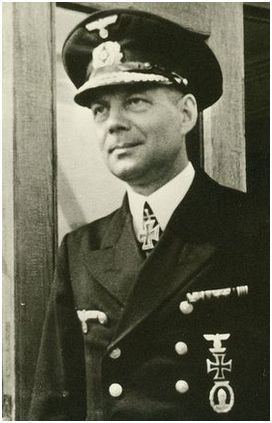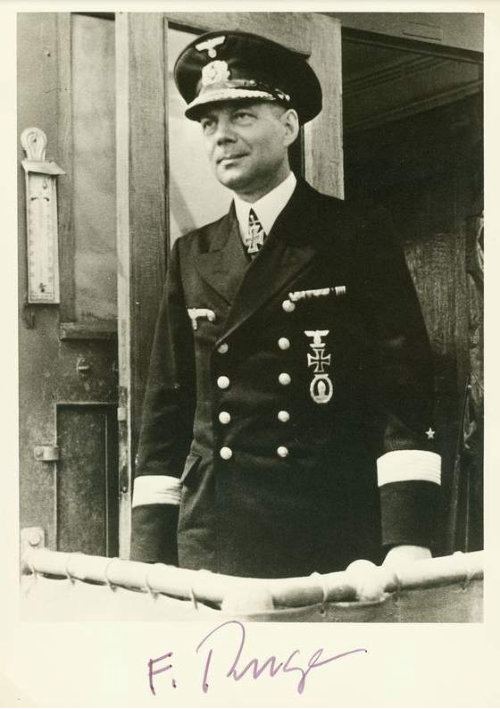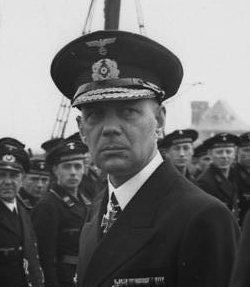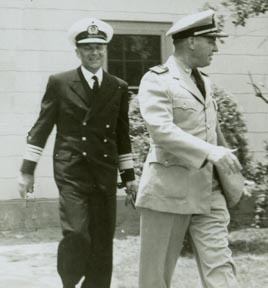Parents Walther Ruge Grandparents Sophus Ruge | Name Friedrich Ruge | |
 | ||
Battles/wars World War IWorld War II Books Der Seekrieg, Rommel in Normandy: Reminiscences | ||
Years of service 1914–45, 1955–61 Died 3 July 1985 (aged 90) Tübingen, Baden-Württemberg, West Germany Nationality German Similar Peter von Zahn, Karl Adolf Zenker, Erwin Rommel | ||
Friedrich Ruge
Friedrich Oskar Ruge (24 December 1894 – 3 July 1985) was an officer in the German Navy and recipient of the Knight's Cross of the Iron Cross of Nazi Germany. He served as the first commander (Inspector of the Navy) of the post-war German Navy.
Contents

Early life and military career

Friedrich Ruge was the son and grandson of German educators. Joining the Imperial German Navy as a cadet in March 1914, he was soon a participant in the 1914, 1915, and 1916 Baltic Sea operations. In 1917 and 1918, he sailed with the destroyer raids in the North Sea and English Channel.

After the armistice, Ruge was an officer aboard the German destroyer B-112, interned at Scapa Flow and in June 1919, he played a role in the scuttling of the German Fleet.

Returning to Germany to continue his naval career in the service of the new Weimar Republic, for the next two decades he concentrated on mines and mine warfare. From 1921 to 1923, he commanded a minesweeper. In the UK during the 1930s he met an ex British sailor at a regatta, Lt Aubrey Grey, whose ship, the HMS Partridge was sunk in 1917 by the SMS V100, the ship that Ruge had been serving on. The V100 was the ship that rescued Grey from the water after the sinking and the pair became friends after meeting, their friendship only interrupted by World War II. After studies at Berlin Institute of Technology, he was the senior officer of a flotilla of minesweepers, and, in 1937, achieved the top post in that division.
World War II
In World War II, he was a part of the Polish Campaign in 1939 and the North Sea-English Channel operations during 1940. From 1940 to 1943, he was stationed in France, rising through the upper ranks to become Vice Admiral in 1943. Sent to Italy in 1943, he served as Senior German Naval Officer until mid-summer. He was appointed as Naval Advisor to Field Marshal Erwin Rommel in November 1943 to supervise the defense of northern France from the predicted Allied invasion. He had no faith in land mines and artillery shells struck underwater, but the marine mines he wanted weren't available. In August 1944, he became the Kriegsmarine's Director of Ship Construction, a position in which he served till the end of World War II.
Post-war
At the end World War II, Ruge became a POW. In 1946, he started a new life as a translator, writer and educator in Cuxhaven. He was one of four Flag Officers who made up the Naval Historical Team at Bremerhaven, sponsored by the United States Navy. He entered politics as a political independent to the Cuxhaven Town Council.
In 1950, Ruge was part of a select group of former Wehrmacht high-ranking officers invited by Chancellor Konrad Adenauer to take part in the conference to discuss West Germany's rearmament. The conference resulted in the Himmerod memorandum that contributed to the creation of the myth of the "clean Wehrmacht".
During the early 1950s, he advised as to how the navy could be restructured in the new Bundesmarine, as detailed in Searle's Wehrmacht Generals. Called out of retirement when Germany became a part of NATO, Ruge was appointed Inspector of the Navy (a position similar to the U.S. Chief of Naval Operations), a post he occupied until 1961.
Afterward, he became a member of the faculty at the University of Tübingen, eventually becoming an Associate Professor on 21 July 1967 there. He was a guest lecturer at many universities, including the U.S. Naval War College at Newport.
Admiral Ruge was one of the umpires for the 1974 Sandhurst wargame on Operation Sea Lion.
He died in 1985.
Literary works
Ruge was the author of several books, including The Soviets as Naval Opponents, 1941-1945, written for Annapolis Naval Institute in 1979, and Rommel in Normandy, written in 1959.
Quoted at Normandy: Utilization of the Anglo-American air forces is the modern type of warfare, turning the flank not from the side but from above.
In the movie "The Longest Day" (1962), he played himself, and was a consultant to the film.
